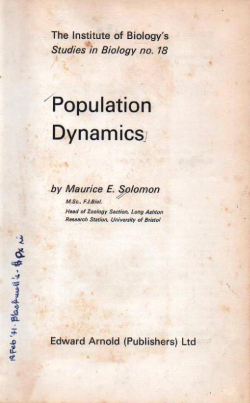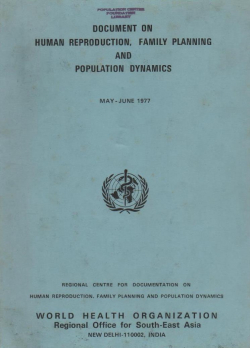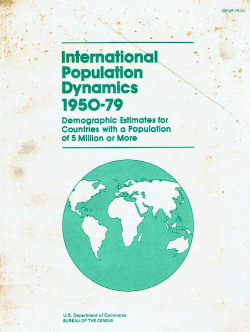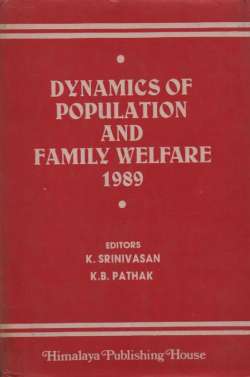Population dynamics

Book Stores
Type
Book
Authors
Category
General Collection
[ Browse Items ]
Publication Year
1969
Publisher
Edward Arnold (Publishers), United States
Pages
60
Tags
Description
Notes:
Includes references.
Includes references.
Biblio Notes
Contents:
1. Characteristics of Population
1.1 What is Population?
1.2 Population of what?
1.3 Numbers, dispersion, and density.
2. Aspects of Population
2.1 What is population dynamics?
2.2 Questions in Population dynamics.
2.3 Theory and reality.
3. The Functioning of Populations: Gains and Losses
3.1 The power of increase.
3.2 Morality.
3.3 Dispersal.
3.4 Assessing rates of increase.
3.5 Population growth curves.
4. The Functioning of Populations: Fluctuation and Regulation
4.1 Fluctuations and cycles of abundance.
4.2 Regulation of abundance.
4.3 Regulation and density-dependence.
4.4 Factors, processes and density-relationships.
4.5 Non-regulatory processes.
4.6 Comparison of three basic density-relationships.
4.7 Population and environment as a working unit.
5. Population Interaction
5.1 Types of interaction.
5.2 Forms of density-dependence.
5.3 Interactions of predators and prey, or parasites and hosts.
5.4 Competition and self-regulation among higher animals.
6. Plant Population Dynamics
6.1 Similarities and differences between plant and animal populations.
6.2 Density effects and competition among plants.
6.3 Regulation of plant populations.
7. Economic and Social Population Problems
7.1 Crops as populations.
7.2 Populations of Pets.
7.3 Biological control of pets.
7.4 The impact of modern insecticides.
7.5 Integrated control and pest management.
7.6 Man as a predator.
7.7 Population of domesticated animals.
7.8 Human populations.
8. Exercises
9. References
1. Characteristics of Population
1.1 What is Population?
1.2 Population of what?
1.3 Numbers, dispersion, and density.
2. Aspects of Population
2.1 What is population dynamics?
2.2 Questions in Population dynamics.
2.3 Theory and reality.
3. The Functioning of Populations: Gains and Losses
3.1 The power of increase.
3.2 Morality.
3.3 Dispersal.
3.4 Assessing rates of increase.
3.5 Population growth curves.
4. The Functioning of Populations: Fluctuation and Regulation
4.1 Fluctuations and cycles of abundance.
4.2 Regulation of abundance.
4.3 Regulation and density-dependence.
4.4 Factors, processes and density-relationships.
4.5 Non-regulatory processes.
4.6 Comparison of three basic density-relationships.
4.7 Population and environment as a working unit.
5. Population Interaction
5.1 Types of interaction.
5.2 Forms of density-dependence.
5.3 Interactions of predators and prey, or parasites and hosts.
5.4 Competition and self-regulation among higher animals.
6. Plant Population Dynamics
6.1 Similarities and differences between plant and animal populations.
6.2 Density effects and competition among plants.
6.3 Regulation of plant populations.
7. Economic and Social Population Problems
7.1 Crops as populations.
7.2 Populations of Pets.
7.3 Biological control of pets.
7.4 The impact of modern insecticides.
7.5 Integrated control and pest management.
7.6 Man as a predator.
7.7 Population of domesticated animals.
7.8 Human populations.
8. Exercises
9. References
Number of Copies
1
| Library | Accession No | Call No | Copy No | Edition | Location | Availability |
|---|---|---|---|---|---|---|
| Main | 101001 |
QL 752 S64 1969 |
1 | Yes |



